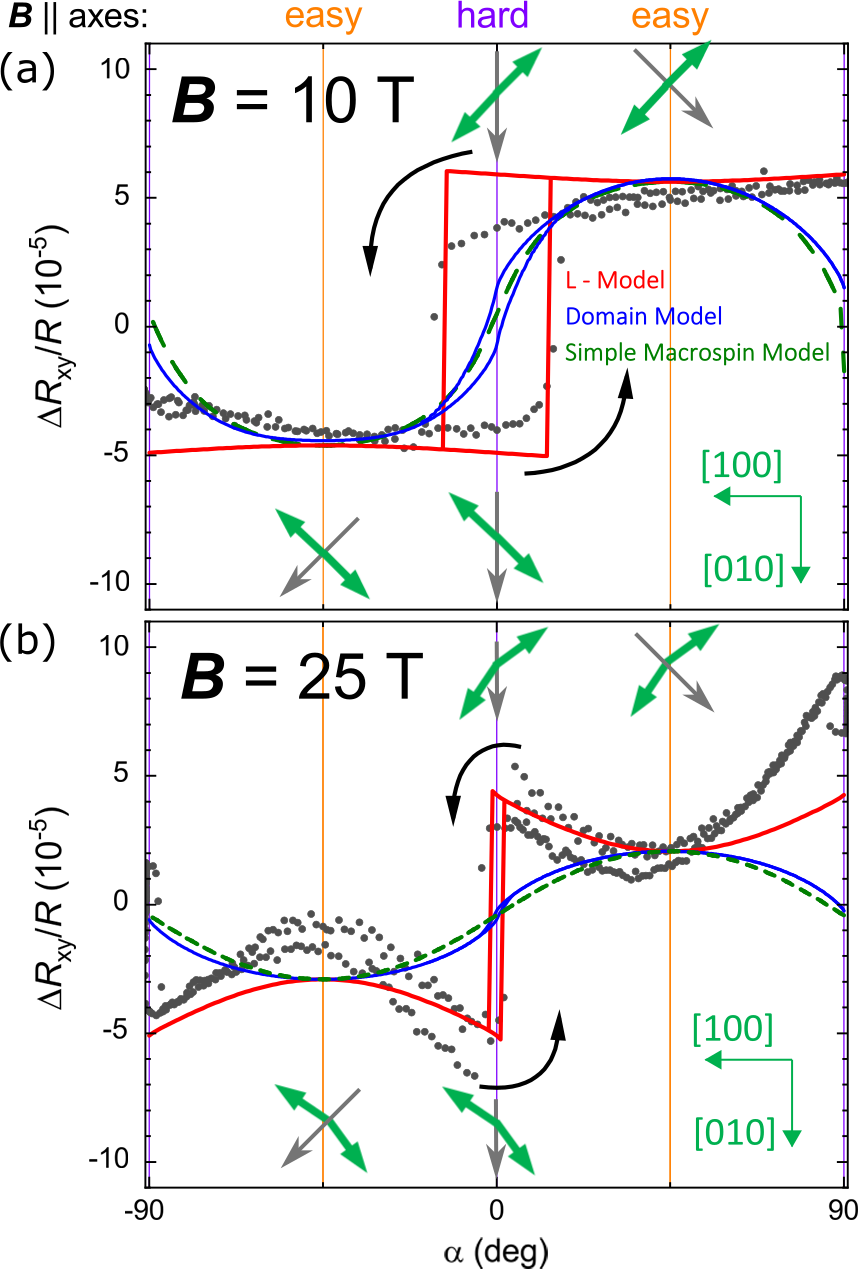Michał Grzybowski, Eindhoven University of Technology and University of Warsaw, and Uli Zeitler, HFML Nijmegen.
Antiferromagnetic thin-film materials are robust against a magnetic field making them promising to be used in numerous spintronic applications. The magnetic properties of an antiferromagnet are governed by the competition between the magneto-crystalline anisotropy and antiferromagnetic exchange interactions. Conventionally, the anisotropy in antiferromagnetic materials is considered to be independent of the magnetic field. Researchers from Eindhoven University of Technology, the Universities of Warsaw, Kraków and Mainz, the Polish Academy of Science, and HFML-EMFL have now shown that the magnetic anisotropy in antiferromagnetic films of CoO with an adjacent Pt layer actually does depend on the magnetic field. This observation was realized by the detection of hysteresis loops in the angular dependence of the spin-Hall magnetoresistance persisting up to the highest tested magnetic fields (30 T). The hysteresis only appears for magnetic fields exceeding the spinflop transition and for temperatures below the Néel temperature. This surprising behavior can be attributed to an unquenched orbital angular momentum in CoO which promotes a field-dependent magnetic anisotropy. As illustrated in the Figure, such a behavior cannot be explained by a simple macro-spin model nor a domain model. Rather, we have to describe it by a more complex so-called L model, where the field-induced tilting of the orbital momentum from the easy axis is included. More generally, the findings of this work highlight the importance of magnetic-field-induced anisotropy variations and the role of unquenched orbital moments in the physics of antiferromagnets and their potential applications.

Figure: Angular dependence of the relative spin-Hall magnetoresistance for a CoO / Pt structure measured at (a) B = 10 T and (b) B = 25 T. The experimental data (black dots) is compared to a simple macro-spin model (green dashed line), a domain model (blue line) and L model (red line; see reference for more details).
Antiferromagnetic hysteresis above the spin-flop field, M. J. Grzybowski, C. F. Schippers, O. Gomonay, K. Rubi, M. E. Bal, U. Zeitler, A. Kozioł-Rachwał, M. Szpytma, W. Janus, B. Kurowska, S. Kret, M. GryglasBorysiewicz, B. Koopmans, and H. J. M. Swagten, Physical Review B 107, L060403 (2023).
https://journals.aps.org/prb/abstract/10.1103/PhysRevB.107.L060403
Contact: Michal.Grzybowski@fuw.edu.pl, zeitler@ru.nl






